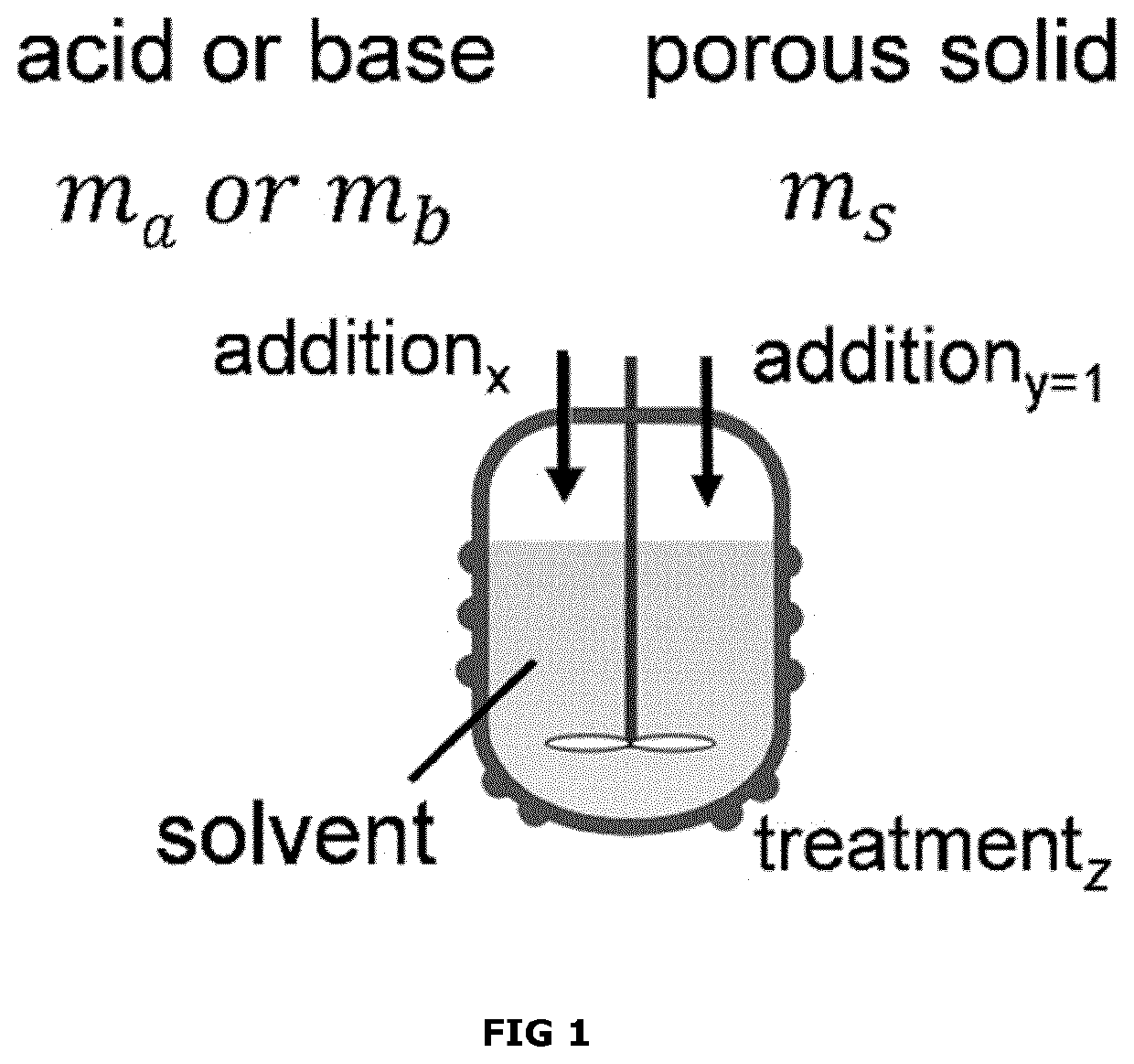Zeolite after treatment method
a treatment method and zeolitic technology, applied in the field of zeolitic after treatment method, can solve the problems of destructing costly organic materials, consuming substantially more time for acid treatments executed before or after alkaline treatment, and consuming 1 h or longer, and achieves enhanced mesoporosity, enhanced physicochemical and catalytic properties, and high brnsted acidity.
- Summary
- Abstract
- Description
- Claims
- Application Information
AI Technical Summary
Benefits of technology
Problems solved by technology
Method used
Image
Examples
example 5
[0145]After a base treatment as described in Example 1, inventive acid treatments were performed at 95° C. for 6 h in a stirred round-bottomed flask. Accordingly, 2.7 g of base-treated USY was suspended in 40 mL of water to which the acid was added gradually during 6 h at a rate of 0.55 mmol of HCl per gram of starting zeolite per hour using a stock solution of 3.14 M HCl. After the reaction, the solid was isolated from the suspension using Buchner filtration, and exposed to 3 ion exchanges in 250 mL water complemented with NH4NO3 (0.8 g per gram of zeolite), followed by filtration, drying at 60° C. overnight, and calcination at 550° C. for 5 h. As illustrated in Table B, the intrinsic properties (microporosity, Brønsted acidity, crystallinity), the secondary porosity (mesoporosity), and the catalytic performance of this sample exceed substantially those related to sample prepared by the standard acid treatment using the same amount of acid per gram of zeolite (Example 3). This acco...
example 6
[0146]After the base treatment as described in Example 1, inventive acid treatments were performed at 95° C. for 6 h in a stirred round-bottomed flask. Accordingly, 2.7 g of base-treated USY was suspended in 40 mL of water to which the acid was added gradually during 6 h at a rate of 1.1 mmol of HCl per gram of starting zeolite per hour using a 3.14 M HCl stock solution. After the reaction, the solid was isolated from the suspension using Buchner filtration, and exposed to 3 ion exchanges in 250 mL water complemented with NH4NO3 (0.8 g per gram of zeolite), followed by filtration, drying overnight, and calcination at 550° C. for 5 h. As illustrated in Table B, the intrinsic properties (microporosity, Brønsted acidity, crystallinity), the secondary porosity (mesoporosity), and the catalytic performance of this sample exceed substantially those related to sample prepared by the standard acid treatment using the same amount of acid per gram of zeolite (Example 4). This accordingly clea...
example 10
[0151]The solid obtained in Example 8 was exposed to a subsequent base treatment. The latter was performed at 65° C. for 30 min in a stirred round-bottomed flask. Accordingly, 1.66 g of solid was suspended in 45 mL of water to which the base was added gradually during 30 min at a rate of 0.2 mmol of NaOH per gram of starting zeolite per min using a 2 M NaOH stock solution. After the reaction, the solid was isolated from the suspension using Buchner filtration, washing, and drying. As illustrated in Table C, the intrinsic properties (microporosity and crystallinity) and the secondary porosity (mesoporosity) of this sample exceed substantially those related to sample prepared by the standard acid treatment using the same amount of acid per gram of zeolite (Example 9). This accordingly clearly highlights the benefits of executing both the acid and the base treatment in a gradual fashion.
AcidBase(first)(second)ma, total / mb, total / Crystal-msmsVmesoaVmicroalinitybSi / AlcExample #(g g−1)(g ...
PUM
| Property | Measurement | Unit |
|---|---|---|
| size | aaaaa | aaaaa |
| time | aaaaa | aaaaa |
| size | aaaaa | aaaaa |
Abstract
Description
Claims
Application Information
 Login to View More
Login to View More - R&D
- Intellectual Property
- Life Sciences
- Materials
- Tech Scout
- Unparalleled Data Quality
- Higher Quality Content
- 60% Fewer Hallucinations
Browse by: Latest US Patents, China's latest patents, Technical Efficacy Thesaurus, Application Domain, Technology Topic, Popular Technical Reports.
© 2025 PatSnap. All rights reserved.Legal|Privacy policy|Modern Slavery Act Transparency Statement|Sitemap|About US| Contact US: help@patsnap.com

